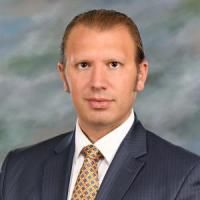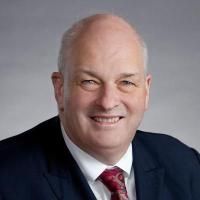Improvements in Outcomes and Cost After Adult Spinal Deformity Corrective Surgery Between 2008 and 2019.
Date
2023-02
Journal Title
Journal ISSN
Volume Title
Repository Usage Stats
views
downloads
Citation Stats
Abstract
Study design
A retrospective cohort study.Objective
To assess whether patient outcomes and cost-effectiveness of adult spinal deformity (ASD) surgery have improved over the past decade.Background
Surgery for ASD is an effective intervention, but one that is also associated with large initial healthcare expenditures. Changes in the cost profile for ASD surgery over the last decade has not been evaluated previously.Materials and methods
ASD patients who received surgery between 2008 and 2019 were included. Analysis of covariance was used to establish estimated marginal means for outcome measures [complication rates, reoperations, health-related quality of life, total cost, utility gained, quality adjusted life years (QALYs), cost-efficiency (cost per QALY)] by year of initial surgery. Cost was calculated using the PearlDiver database and represented national averages of Medicare reimbursement for services within a 30-day window including length of stay and death differentiated by complication/comorbidity, revision, and surgical approach. Internal cost data was based on individual patient diagnosis-related group codes, limiting revisions to those within two years (2Y) of the initial surgery. Cost per QALY over the course of 2008-2019 were then calculated.Results
There were 1236 patients included. There was an overall decrease in rates of any complication (0.78 vs . 0.61), any reoperation (0.25 vs . 0.10), and minor complication (0.54 vs . 0.37) between 2009 and 2018 (all P <0.05). National average 2Y cost decreased at an annual rate of $3194 ( R2 =0.6602), 2Y utility gained increased at an annual rate of 0.0041 ( R2 =0.57), 2Y QALYs gained increased annually by 0.008 ( R2 =0.57), and 2Y cost per QALY decreased per year by $39,953 ( R2 =0.6778).Conclusion
Between 2008 and 2019, rates of complications have decreased concurrently with improvements in patient reported outcomes, resulting in improved cost effectiveness according to national Medicare average and individual patient cost data. The value of ASD surgery has improved substantially over the course of the last decade.Type
Department
Description
Provenance
Citation
Permalink
Published Version (Please cite this version)
Publication Info
Passias, Peter G, Nicholas Kummer, Bailey Imbo, Virginie Lafage, Renaud Lafage, Justin S Smith, Breton Line, Shaleen Vira, et al. (2023). Improvements in Outcomes and Cost After Adult Spinal Deformity Corrective Surgery Between 2008 and 2019. Spine, 48(3). pp. 189–195. 10.1097/brs.0000000000004474 Retrieved from https://hdl.handle.net/10161/27976.
This is constructed from limited available data and may be imprecise. To cite this article, please review & use the official citation provided by the journal.
Collections
Scholars@Duke

Peter Passias

Christopher Ignatius Shaffrey
I have more than 25 years of experience treating patients of all ages with spinal disorders. I have had an interest in the management of spinal disorders since starting my medical education. I performed residencies in both orthopaedic surgery and neurosurgery to gain a comprehensive understanding of the entire range of spinal disorders. My goal has been to find innovative ways to manage the range of spinal conditions, straightforward to complex. I have a focus on managing patients with complex spinal disorders. My patient evaluation and management philosophy is to provide engaged, compassionate care that focuses on providing the simplest and least aggressive treatment option for a particular condition. In many cases, non-operative treatment options exist to improve a patient’s symptoms. I have been actively engaged in clinical research to find the best ways to manage spinal disorders in order to achieve better results with fewer complications.
Unless otherwise indicated, scholarly articles published by Duke faculty members are made available here with a CC-BY-NC (Creative Commons Attribution Non-Commercial) license, as enabled by the Duke Open Access Policy. If you wish to use the materials in ways not already permitted under CC-BY-NC, please consult the copyright owner. Other materials are made available here through the author’s grant of a non-exclusive license to make their work openly accessible.
